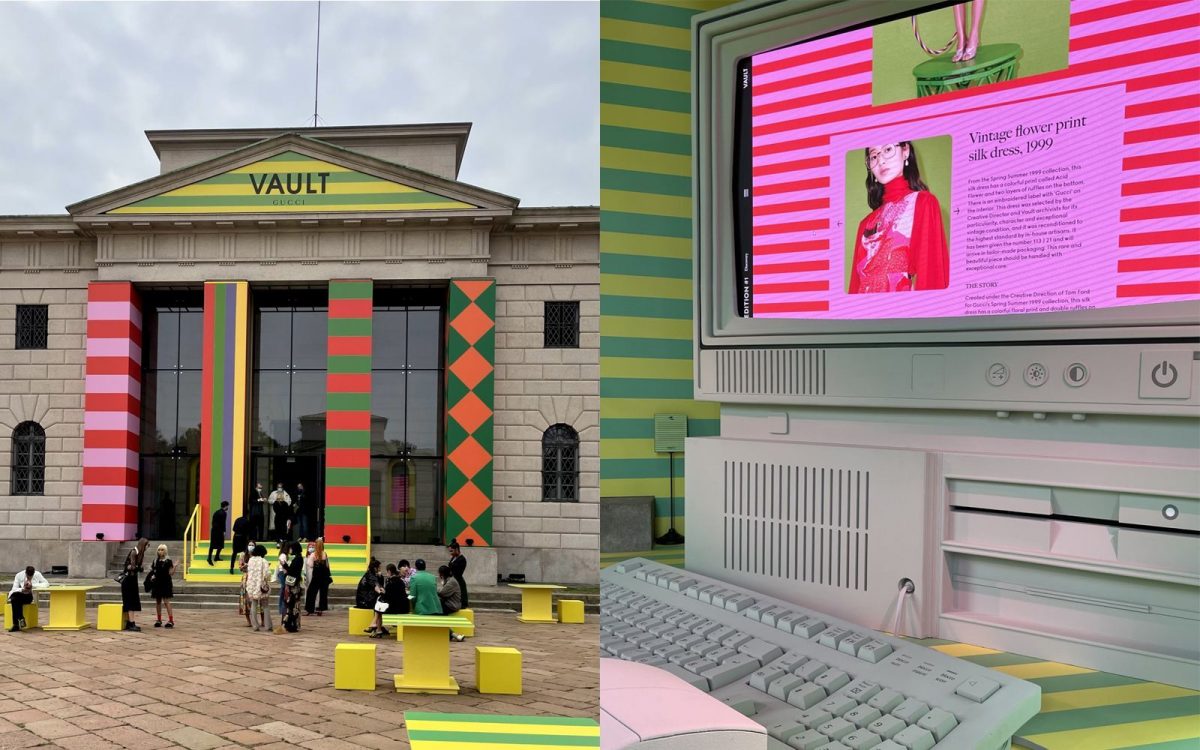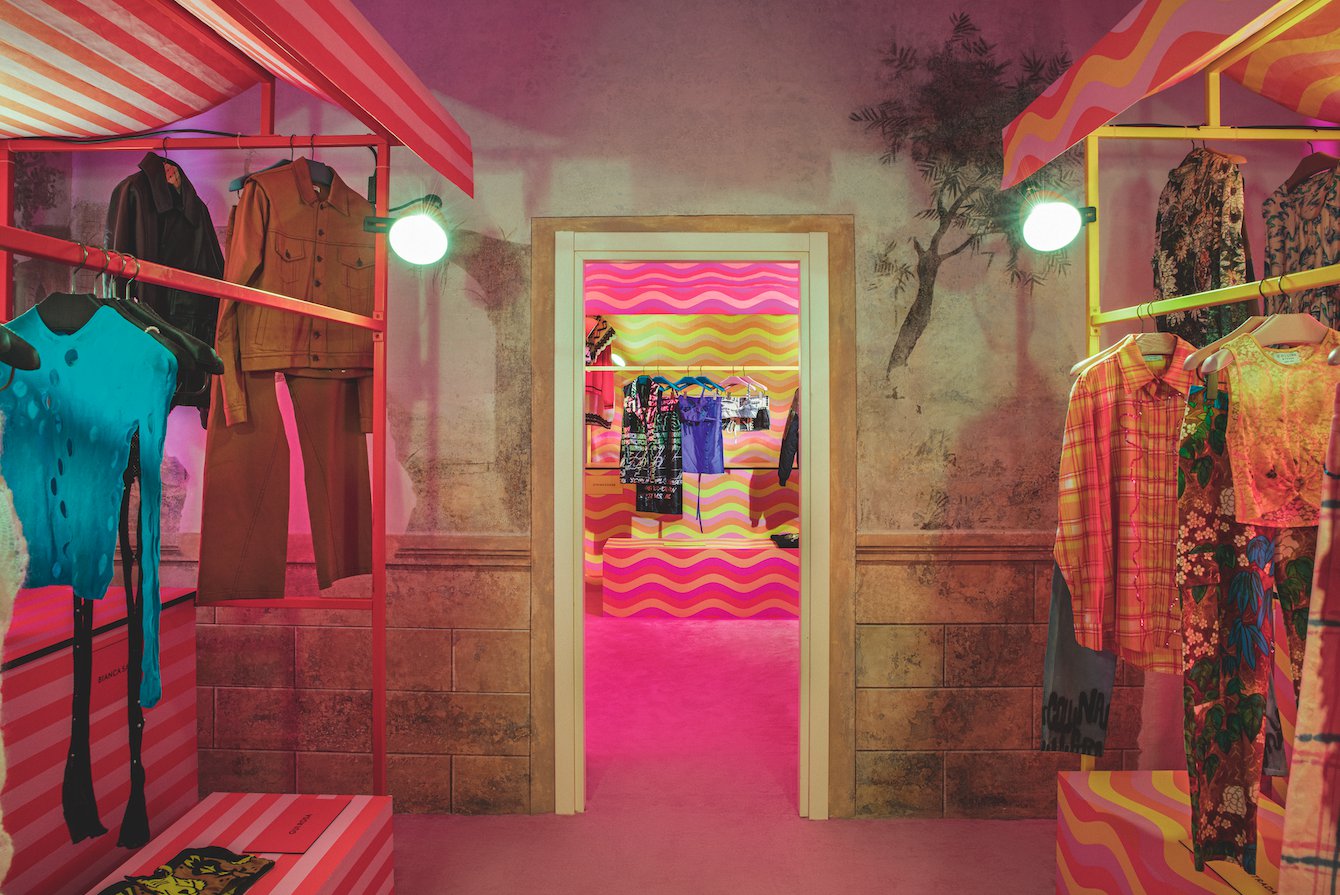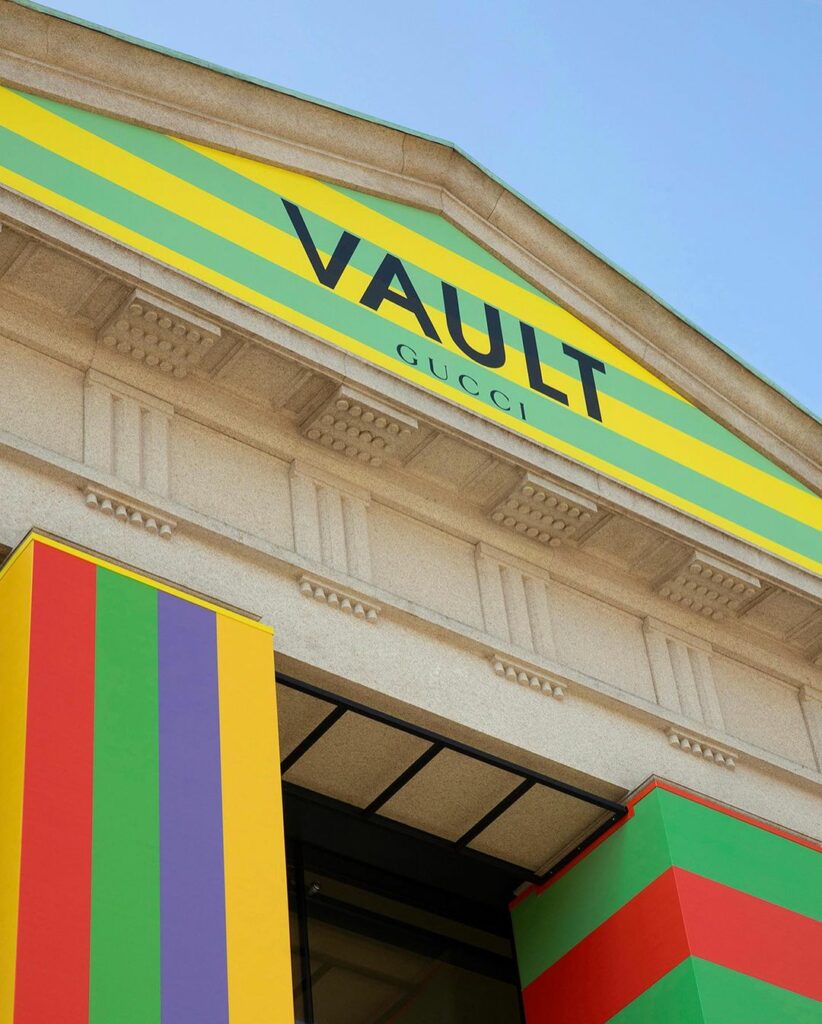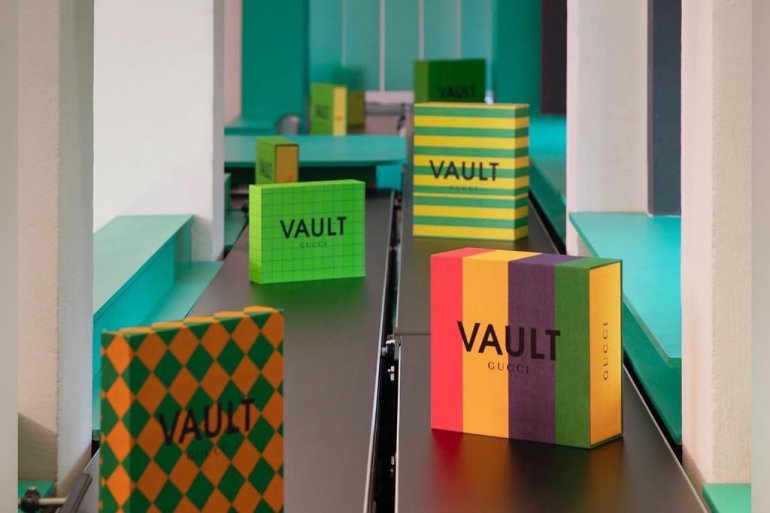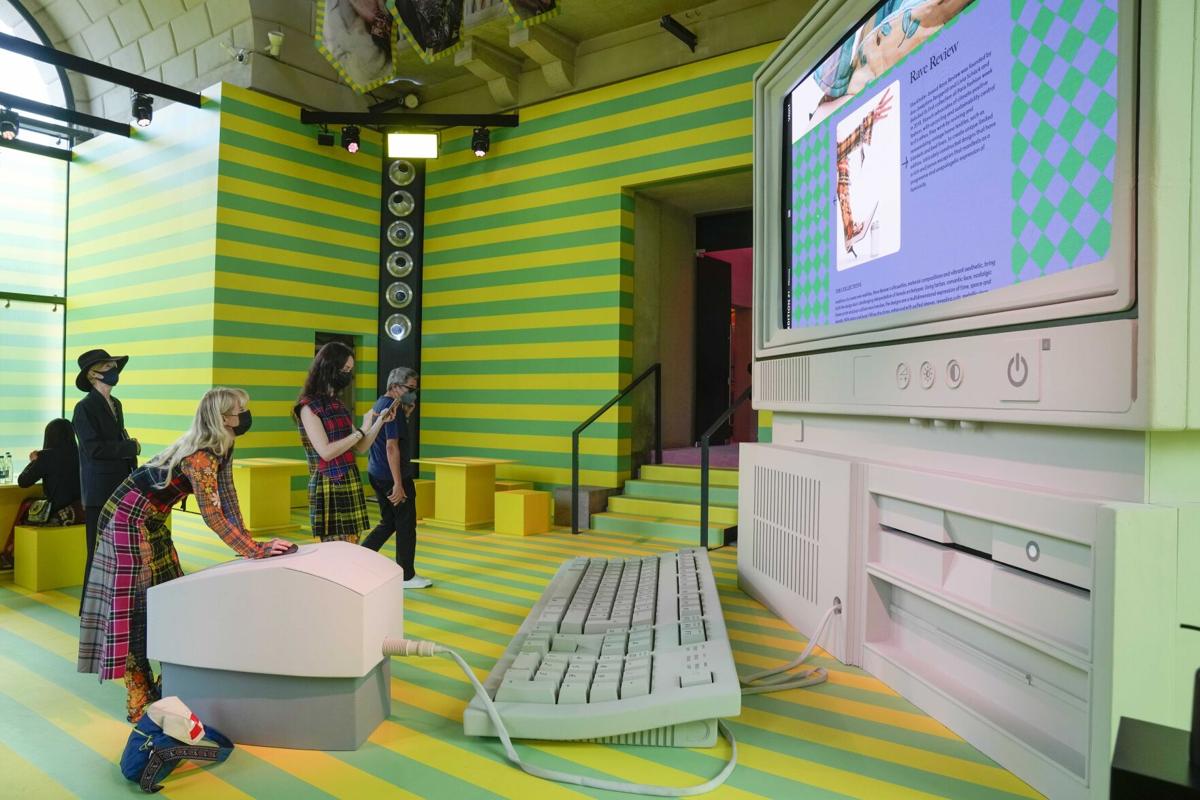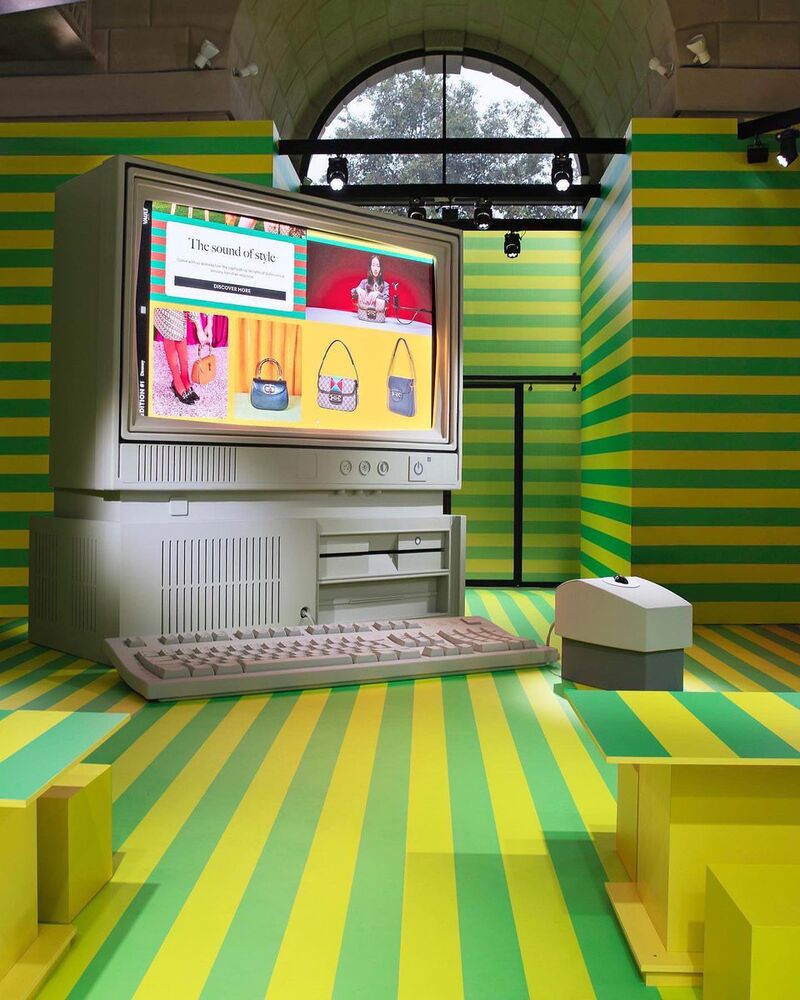Milan Fashion Week: Gucci on Saturday launched an e-commerce site showcasing refurbished vintage Gucci products and capsule collections by young designers.
The latest twist in Alessandro Michele’s conceptual adventures through time and space at Gucci landed at Milan Fashion Week today. Its title is Gucci Vault and the elevator pitch is this: it’s a digital concept store whose offer includes choice vintage pieces from across the 100-year history of the house that are freshly refurbished by Gucci artisans and both customized and curated by Michele himself. That’s alongside exclusive new pieces from a 13-strong global roster of exciting emerging designers. This lucky list is made up of Ahluwalia, Bianca Saunders, Boramy Viguier, Charles de Vilmorin, Collina Strada, Cormio, Gui Rosa, Jordanluca, Rave Review, Rui Zhou, Shanel Campbell, Stefan Cooke, and Yueqi Qi.
The logic behind Michele’s latest venture seems powerful. The idea of a luxury house offering vintage pre-owned items from its history is creatively mature, sustainably sensitive, and has commercial potential. Gucci is not only making moves to own its resale market, but by customizing the items before reselling them it’s creating a new category of objects that are simultaneously vintage and new. And while other big luxury labels have offered retail support to younger designers in the past—as this Vogue Business take on the Gucci Vault outlined this morning—today’s cross-contamination of non-Gucci new-designer sizzle with vintage Gucci goodness can only benefit both sides.
For Vault, Gucci was inspired by the concept stores of the 1990s, where fashion met design and pop culture, creating a new creative scene of contamination inspired by the principle of cross-sectorality. Following the same philosophy of GucciFest, Vault will also feature poems, stories and other creative forms in a project that, by celebrating the 100th anniversary of the brand, marks an important step in the role of curator and incubator that Gucci wants to assume in the future. An artistic choice, of course, but also a strategic one in order to gain more and more space within Gen Z, whose consumption habits and interests are now radically different from those of previous generations.

